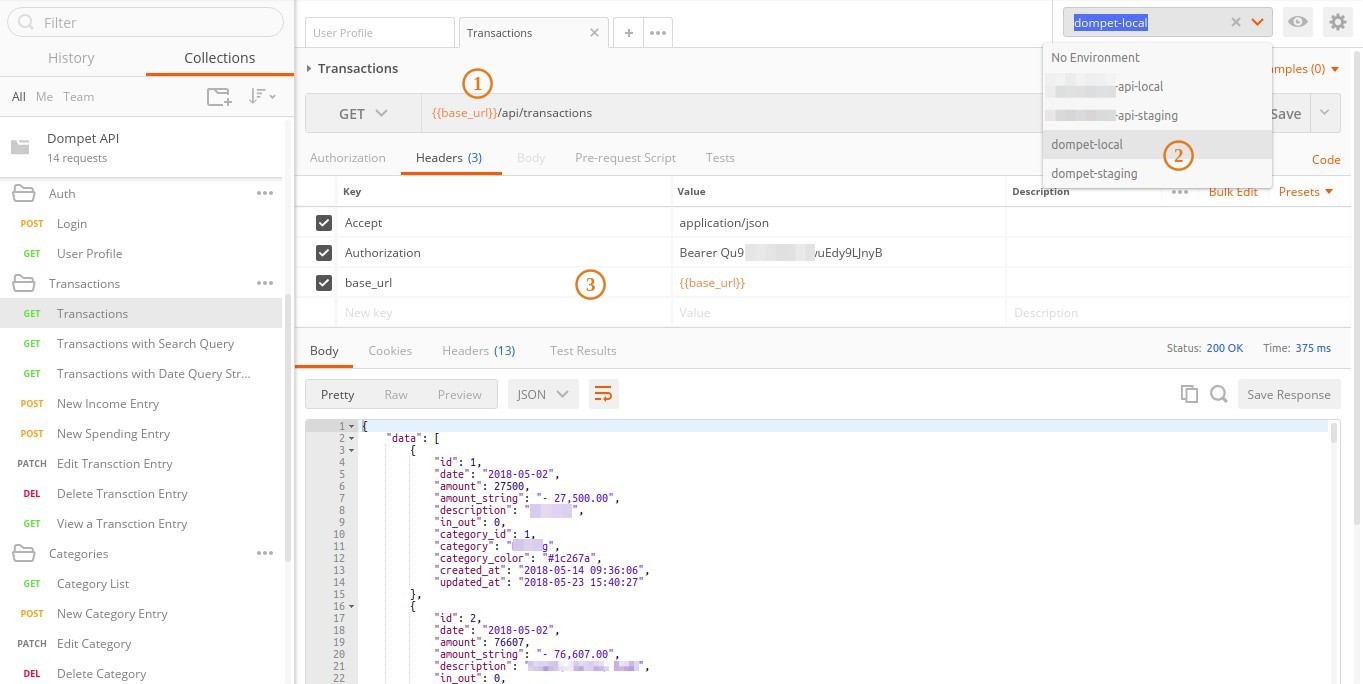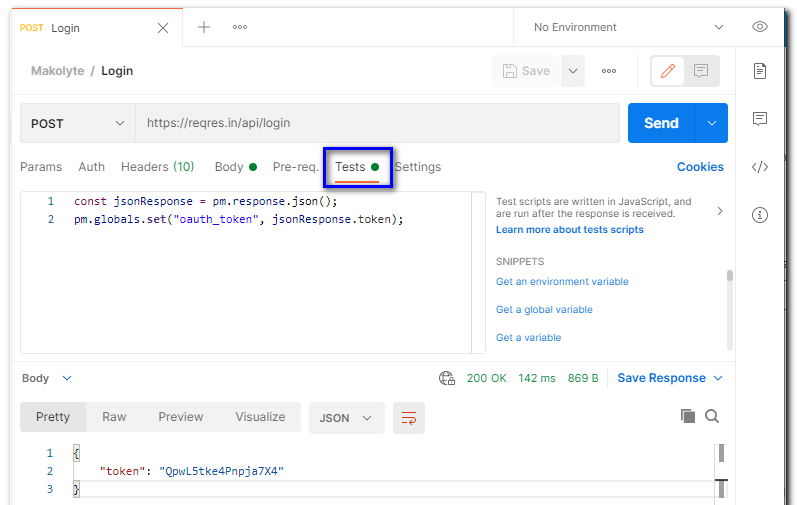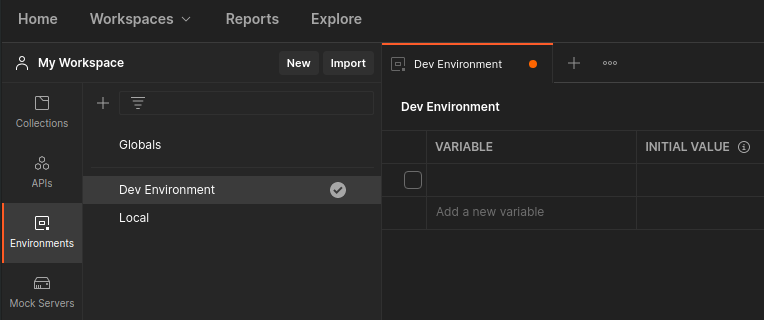

I would highly suggest taking an instant to set up these tools in order to take full advantage of the Postman capabilities.

Postman has saved me a considerable amount of time as well as headaches when I am developing it makes the process much easier to pass on my collections to other developers that need to make the same API requests.

Your requests can comprise of the environment variables that you now have in place so that you can conveniently work in multiple environments. These collections can additionally be shared with and edited by your development team to aid in collaboration. By doing so, you can categorize all of your requests so that you can find them easier and then quickly make your call. Organization of your request collections can also be handy. Once you have your environment up you can start adding your variables. To get started, click on the gear icon on the Postman dashboard shown below to start adding environment variables. An action method parameters can be either of a complex Post office complaint. After setting up your variables and building your request, all that’s left is to select your environment and make your call. Click on the environment variable lookup icon. Step1 Click on the eye icon beside the No Environment dropdown and then click on the Add link within the Environment section. By creating Environments for production, testing, staging and so on, we can run the same URL in various Environments. If you are working with many different environments, you may set up each with any authorization tokens, urls, or any other variables you find necessary to set. An Environment is a group of variables that we can use in a Postman request. What I found to be most beneficial are environment variables. There are many tools available that we can use to do our development or testing with ease. However, thanks to the scripting features.When developing or testing APIs, Postman makes the job simple for us. Paste updated JWT value (make sure you removed the old value completely first).With the release of Postman v8.2 it is easier to find and export Postman collections but harder to find and export environments, hence this article. This is especially important when using Newman (their command-line collection runner). Copy JWT value (oh yeah, make sure you grab it all since it is rather long. Postman can export data, including collections and environments, to be used outside of Postman.Scroll down to results and find JWT value.Originally, my workflow looked something like this: Collection variables at the collection level. After the login, we needed to resubmit the JWT token in all of our subsequent requests. Postman official document says if more than one variable with the same name is available to a request, Postman will use the value from the variable with narrowest scope. In this module, you will learn how to: Create and set variables at multiple scopes: Global variables at workspace level.

Do this by editing your collection and going to the Variables tab to add a new variable. So you can create a variable for your Bearer Token value. For a recent project I was on, we were using standard JWT authentication. You can define variables in Postman environments and collections in order to simplify your requests by setting a value in one place and reference it in as many places as necessary. Taking this one step further, we can leverage this scripting to help with some tedious tasks. Taking this one step further, Postman ALSO has a pre-request and post-request (also known as test) scripting possible This allows you to either do some advanced prep work before making your request, or do some testing of your API request to make sure things actually ran smoothly instead of having to inspect the details. By storing a value as a variable, you can reference it throughout your collections, environments. By doing this through environments, you can have one address, /auth/login, but then simply reconfigure the server value to match the environment your in. Variables enable you to store and reuse values in Postman. Variables can also be grouped into a Postman environment. For example, you may have a variable called “server” in which you put the destination server to call. Setting up Postman variables Variables in Postman allow you to store and reuse values rather. This allows you to setup variables that you can add into your API requests to make things easier. Otherwise, here’s a quick tip to make to help when dealing with frequently changing environment variables, such as session IDs or JWT tokens.Īs you may know, Postman includes this amazing feature called “environments”. Question: 12 Which is the correct form to insert an environment variable into a script in tests tab (5 Points) EnvironmentVariable. If you haven’t used Postman yet for your general development needs while building or consuming a REST (or SOAP!) API, go get this amazing tool NOW and then keep reading. To create an environment variable follow the following steps: Go to Environment quick look button visible as an eye icon available in the top right corner of the builder section.


 0 kommentar(er)
0 kommentar(er)
